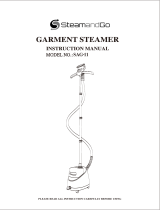
Car/taxi
• Ideally, the wheelchair should be
placed in the boot.
• If the chair is placed in the back seat,
ensure that it cannot tip over or move.
Secure it, if possible using the vehicle's
seat belts.
Vehicle transport
11
Etac recommends in the following order:
1) The user transfers to one of the seats in
the vehicle and uses the vehicle’s 3-point
belt while travelling. The wheelchair is
then placed in the boot or safely in the
back seat so that it cannot overturn or
roll.
2) The wheelchair is secured facing forwards
in the vehicle as per point 2:5, the user
uses a separate 3-point belt that is
secured in the vehicle. This is the way
in which the wheelchair is tested and
approved according to the ISO-standard
for crash testing of wheelchairs in
vehicles.
3) According to directive 2001/85/EC,
appendix VII, point 3.8.3. there are
specially marked wheelchair locations
in vehicles that permit transport with
a wheelchair facing in the opposite
direction of travel. If this means of
travel is used, the user/care giver must
be aware while travelling, prepared
for sudden movements and have the
capacity to maintain a safe sitting position
throughout the entire journey. The user’s
disabilities must not be of such an extent
that he/she is not able to hold onto the
handles fitted in the vehicle when there
are changes of speed or direction.
In conjunction with points 2 and 3:
- a positioning belt must be used
- a correctly adjusted headrest must be
used
- the backrest must be level with or
above the user’s shoulders
- the parking brake must be used
- the anti-tips must be lowered
- a heel strap must be used
- a cross brace must be used (not with
ECS back support)
- rear wheels must have handrims
Securing
Mobility service bus or similar:
The wheelchair must be secured in the
transport attachment as shown in the
diagram. The straps must not be passed
through the wheels or around the back
tubes.












